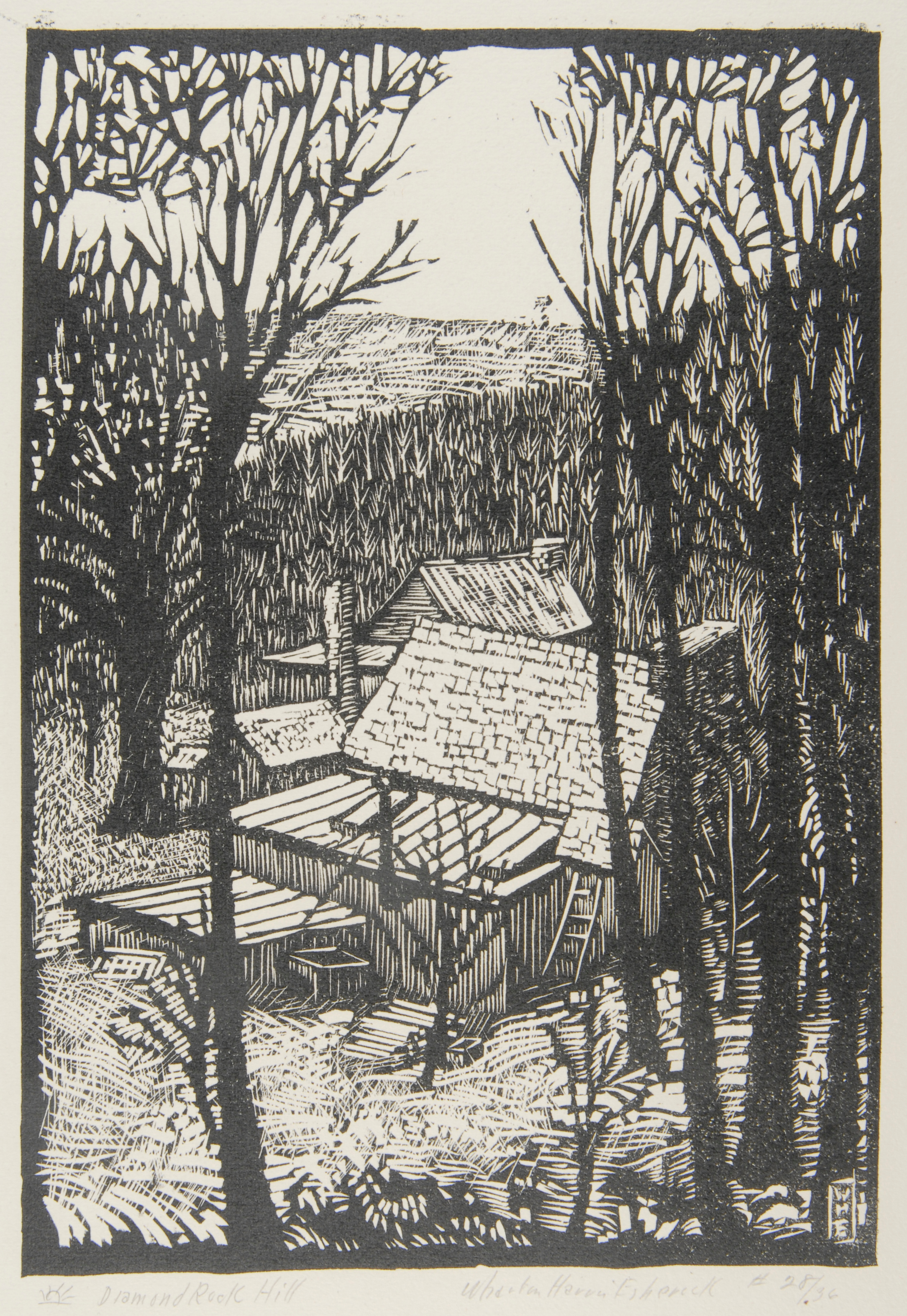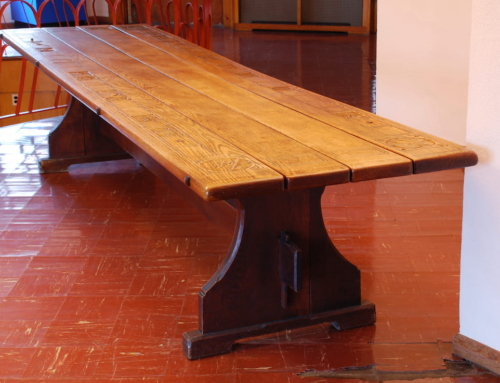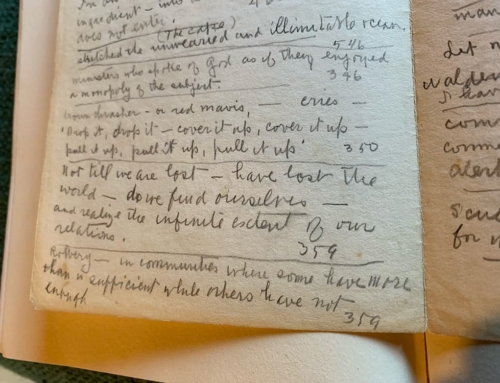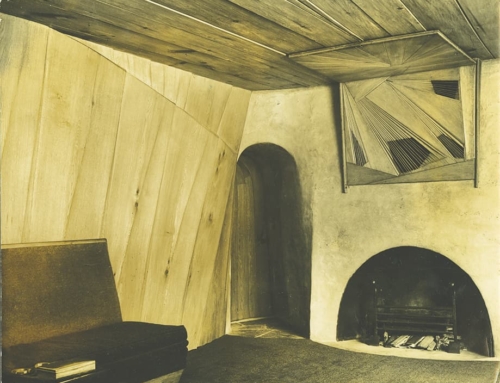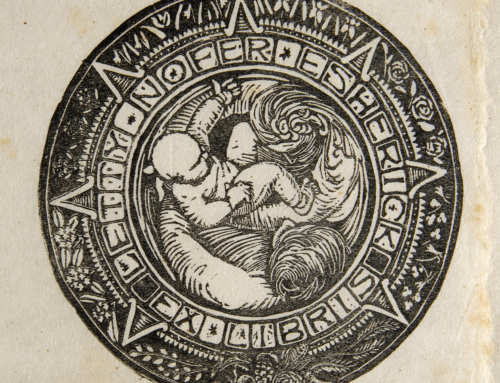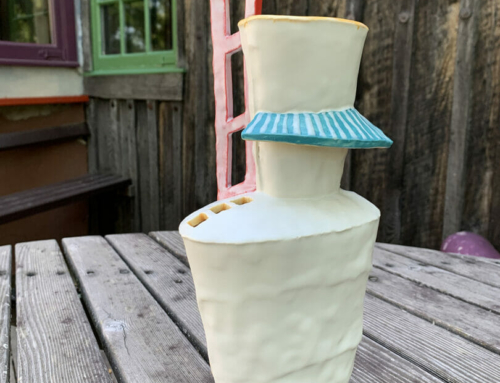Ever wonder how Wharton came to live his life on the quiet hillside of Valley Forge Mountain? I thought for the first blog posting we should start off with the basics. Wise words from the Sound of Music suggest that we: “start at the very beginning, a very good place to start”, and so we shall, let’s get to know Wharton Esherick and the path that took him from bustling city streets to winding country roads.
 Wharton Harris Esherick was born on July 15th, 1887 to a fairly prominent family in Philadelphia. His parents, Annie and George Esherick, had seven children in total: Edith, Emma, George Jr., Wharton and his twin sister Caroline, Joseph and Frank; needless to say the Esherick household was alive with activity. From a young age, Wharton had a fascination with art; his interests began with sketching and being able to capture what he was looking at on paper; his love of drawing found its way onto the back of every piece of paper in his house. Wharton would draw anything and everything, and his brother George pointed out that Wharton would spend hours copying Charles Dana Gibson’s fashion drawings in Godey’s Lady’s Book, a lady’s magazine filled with sketches of the latest fashions. His talent for art was discovered by an art teacher when he was in 8th grade, and was for the most part, over looked by his parents who wanted him to one day have a “respectable” career.
Wharton Harris Esherick was born on July 15th, 1887 to a fairly prominent family in Philadelphia. His parents, Annie and George Esherick, had seven children in total: Edith, Emma, George Jr., Wharton and his twin sister Caroline, Joseph and Frank; needless to say the Esherick household was alive with activity. From a young age, Wharton had a fascination with art; his interests began with sketching and being able to capture what he was looking at on paper; his love of drawing found its way onto the back of every piece of paper in his house. Wharton would draw anything and everything, and his brother George pointed out that Wharton would spend hours copying Charles Dana Gibson’s fashion drawings in Godey’s Lady’s Book, a lady’s magazine filled with sketches of the latest fashions. His talent for art was discovered by an art teacher when he was in 8th grade, and was for the most part, over looked by his parents who wanted him to one day have a “respectable” career.
When high school came around Wharton knew his career lay in art so he convinced his parents to send him to the Central Manual Training School. Wharton said: “I knew it wouldn’t be like high school. In high school you have to study Latin and Greek and Algebra and Calculus, and I said, ‘I don’t want that kind of stuff!’” When he graduated in 1906 (voted handsomest in the class) he went on to the Pennsylvania Museum School of Industrial Art (currently University of the Arts) and completed a two year program there. He then went on scholarship to the Pennsylvania Academy of the Fine Arts where six weeks before he graduation he dropped out–claiming that he was being encouraged only to copy the great masterpieces of Europe and not to discover and develop himself as an artist. So it was good bye to the Academy and hello to life as an artist in the real world!
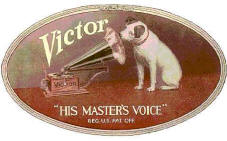 Wharton began working for local newspapers copying photographs so they could be printed as lithographs, until he learned of an artist position at the Victor Talking Machine Company in Camden, New Jersey. There he was again creating drawings from photographs which were then converted to silkscreen stencils that were used to produce posters. Around this time Wharton met and fell in love with Letty Nofer, a free spirited woman who was “…strikingly beautiful, with sparkling dark eyes and long auburn hair.” They were married in Philadelphia on Friday, September 13, 1912 and headed off on their honeymoon on the Wiwurna III to sail around New York. While they were away, Wharton’s job at the Victor Talking Machine Co. was replaced by machinery that could produce posters directly from photographs.
Wharton began working for local newspapers copying photographs so they could be printed as lithographs, until he learned of an artist position at the Victor Talking Machine Company in Camden, New Jersey. There he was again creating drawings from photographs which were then converted to silkscreen stencils that were used to produce posters. Around this time Wharton met and fell in love with Letty Nofer, a free spirited woman who was “…strikingly beautiful, with sparkling dark eyes and long auburn hair.” They were married in Philadelphia on Friday, September 13, 1912 and headed off on their honeymoon on the Wiwurna III to sail around New York. While they were away, Wharton’s job at the Victor Talking Machine Co. was replaced by machinery that could produce posters directly from photographs.
Wharton went back to the newspaper business but decided instead to try and make a living selling his paintings. Letty became a social worker to bring in some income, but they eventually had to give up their apartment and spent that winter in Letty’s parents’ empty beach house. The couple decided that they wanted a life close to nature, where Wharton could paint and they could live off the land. Using a meager inheritance from his grandmother, they began looking for a small farm and found a home in a two-story, 1839 stone farmhouse in rural Paoli. Wharton fell in love with the cherry tree on the property, and they bought the house because of it!
“In the morning the woods and fields glowed with golden sunlight. By mid-afternoon the distant ridge was washed in a pale, smoky blue…Just before winter sunset, the leafless trees turned lavender-scarlet and cast long shadows, like in a Maxfield Parrish landscape. Nights were black and silent, without even a faint glow on the horizon from the distant city, or the sound of a barking dog or serenading cat. Dawn would reveal a herd of foraging deer retreating into the woods, and if there was snow, tracks proved nocturnal visits from opossums, raccoons, or foxes. If there had been freezing rain on a cold night, ice would coat the tree trunks, branches, and twigs and as the sun rose, the ice crystals would be like millions of tiny diamonds, shining all the colors of the rainbow.”
–Mansfield Bascom, W.E. Journey of a Creative Mind
They purchased the farm house for $3,300 and took ownership of their new endeavor on December 13, 1913. The house was everything the couple desired. As they made repairs and additions to the house they enjoyed being out of the city and close to nature like they’d both wanted, finally able to live the organic life they longed for. Wharton set up his easel in
their bedroom in front of a window that over looked Great Valley. The panoramic view of bucolic farmland and busy farmers was like a picture before his eyes; one that changed with the seasons and revealed new scenery and images from which he could draw inspiration.
Today, Wharton’s farmhouse is still standing but has passed into private ownership. If you visit the Museum in the fall there’s a lovely view of the house from the studio’s porch. The landscape of the site has also changed drastically since 1913. What used to be vast open space has been replaced by a forest of deciduous trees that block most of the view of the Great Valley; however the flat farm land remains hidden away in the forest, once you reach the bottom of Valley Forge Mountain the forest floor is completely flat from years of being worked by farmers and their plows.
Now we’ll turn the discussion to you: what interests you about Wharton’s migration from the city to the countryside? What more from the story would you like to know? When is your favorite time of year to visit the site and experience Wharton’s masterpiece? Leave us a comment and let us know!
~~~~~

